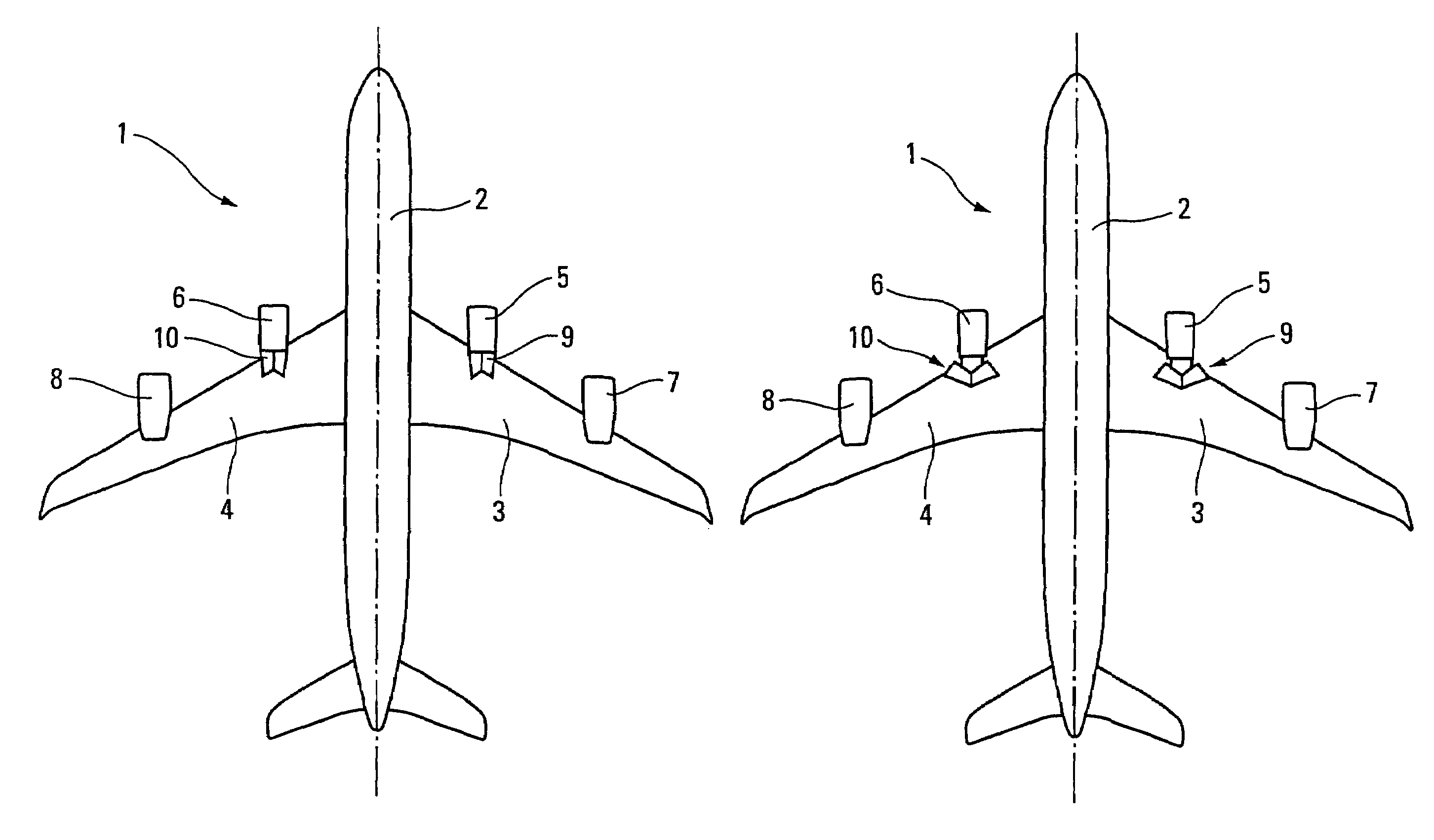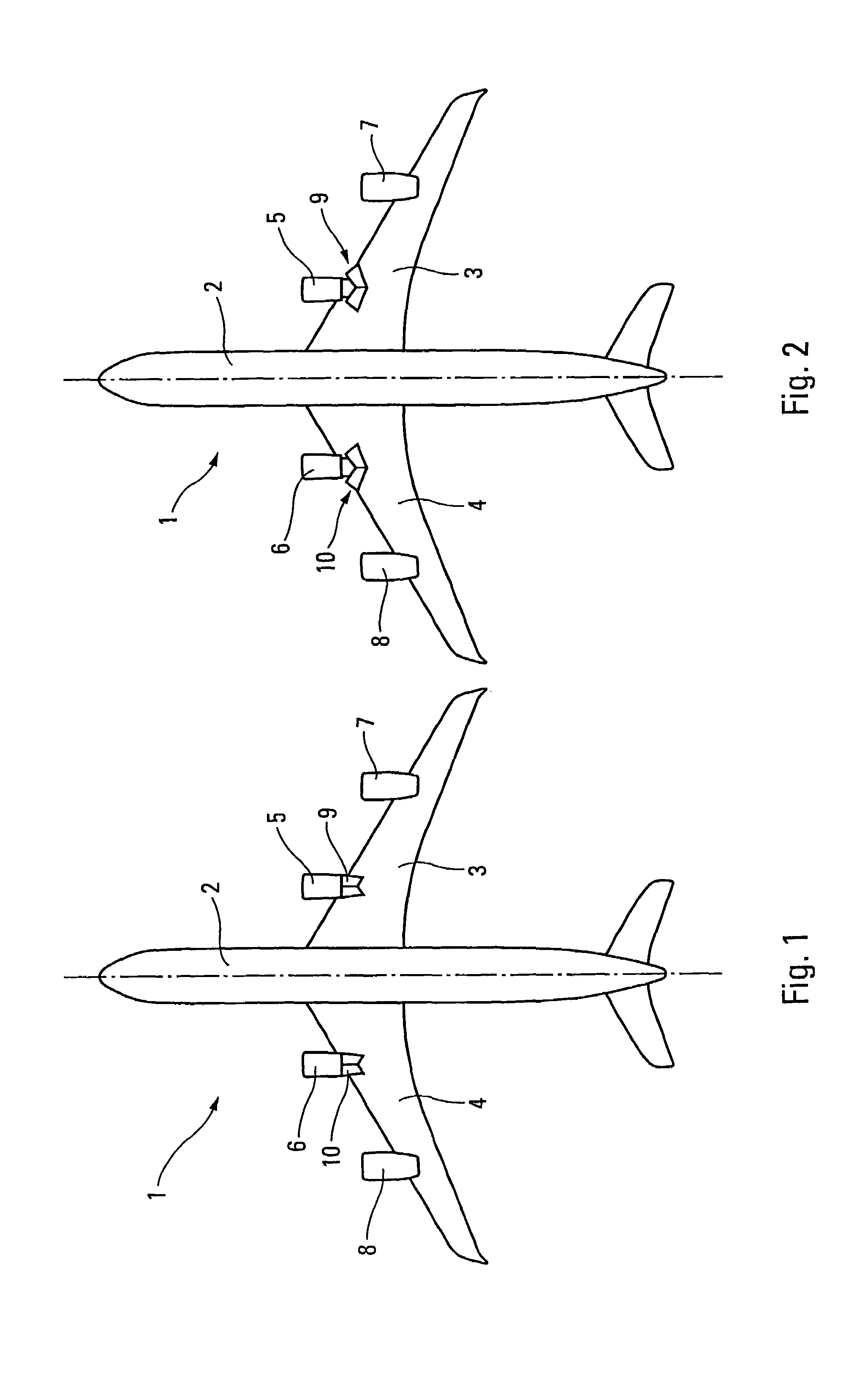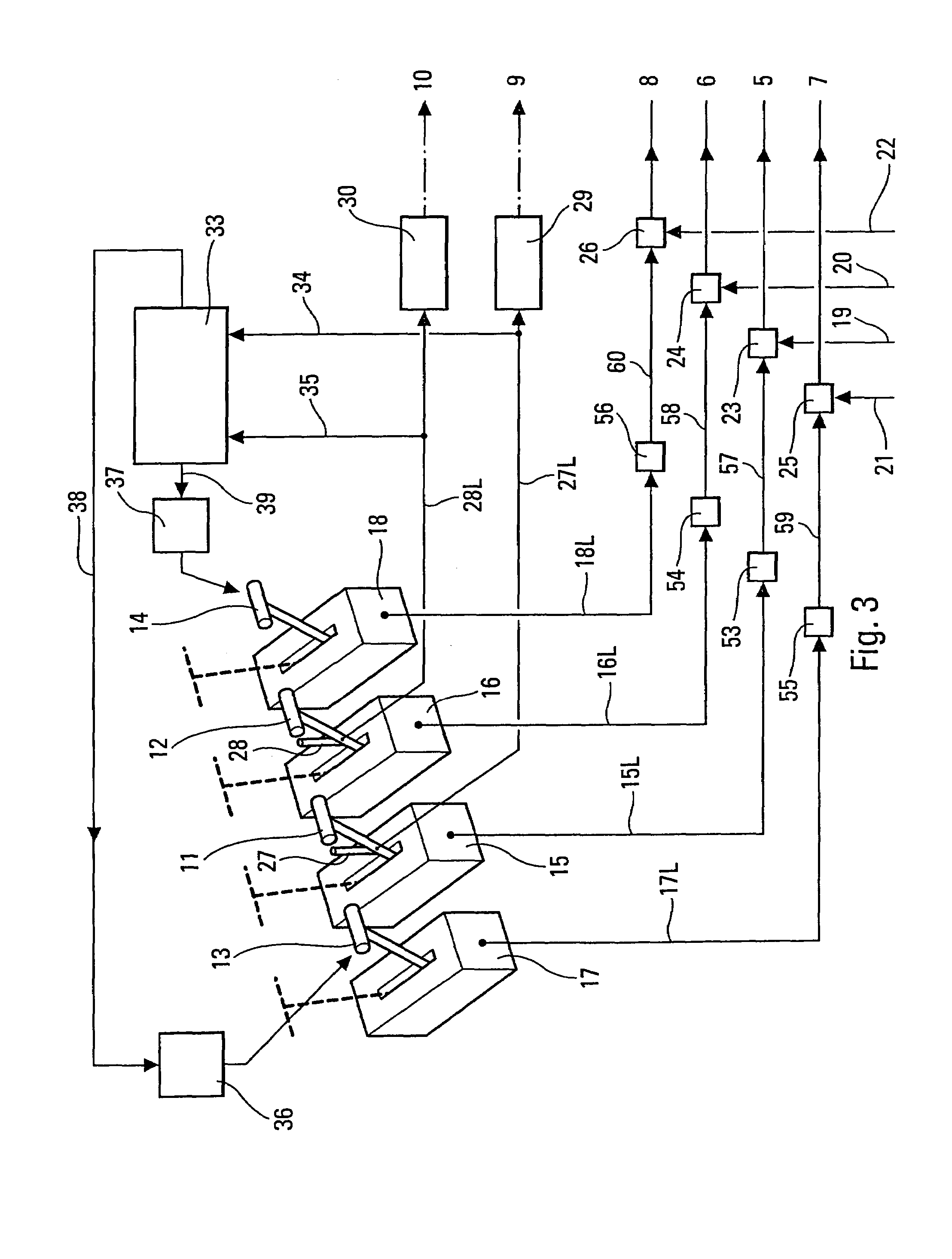Aircraft provided with thrust reversers
- Summary
- Abstract
- Description
- Claims
- Application Information
AI Technical Summary
Benefits of technology
Problems solved by technology
Method used
Image
Examples
Embodiment Construction
[0029]The aircraft 1, shown diagrammatically from below in FIGS. 1 and 2, comprises a fuselage 2 and two wings 3 and 4, symmetric with respect to said fuselage. On each of said wings 3 and 4 are mounted an inboard engine 5 or 6 and an outboard engine 7 or 8. The inboard engines 5 and 6 are each equipped with a thrust reverser 9 or 10, while the outboard engines 7 and 8 are devoid of such reversers. In FIGS. 1 and 2, the thrust reversers 9 and 10 have been represented in the form of rear-gate reversers but it goes without saying that they could have a different structure. The thrust reversers 9 and 10 are represented in the retracted position in FIG. 1 and in the deployed position in FIG. 2.
[0030]As is illustrated diagrammatically in FIGS. 3 and 4, the speed of each engine 5 to 8 is controlled by a pilot, not represented, by way of a specific throttle 11 to 14, associated with a transducer 15 to 18 delivering an electrical signal representative of the position of the corresponding th...
PUM
 Login to View More
Login to View More Abstract
Description
Claims
Application Information
 Login to View More
Login to View More - R&D
- Intellectual Property
- Life Sciences
- Materials
- Tech Scout
- Unparalleled Data Quality
- Higher Quality Content
- 60% Fewer Hallucinations
Browse by: Latest US Patents, China's latest patents, Technical Efficacy Thesaurus, Application Domain, Technology Topic, Popular Technical Reports.
© 2025 PatSnap. All rights reserved.Legal|Privacy policy|Modern Slavery Act Transparency Statement|Sitemap|About US| Contact US: help@patsnap.com



